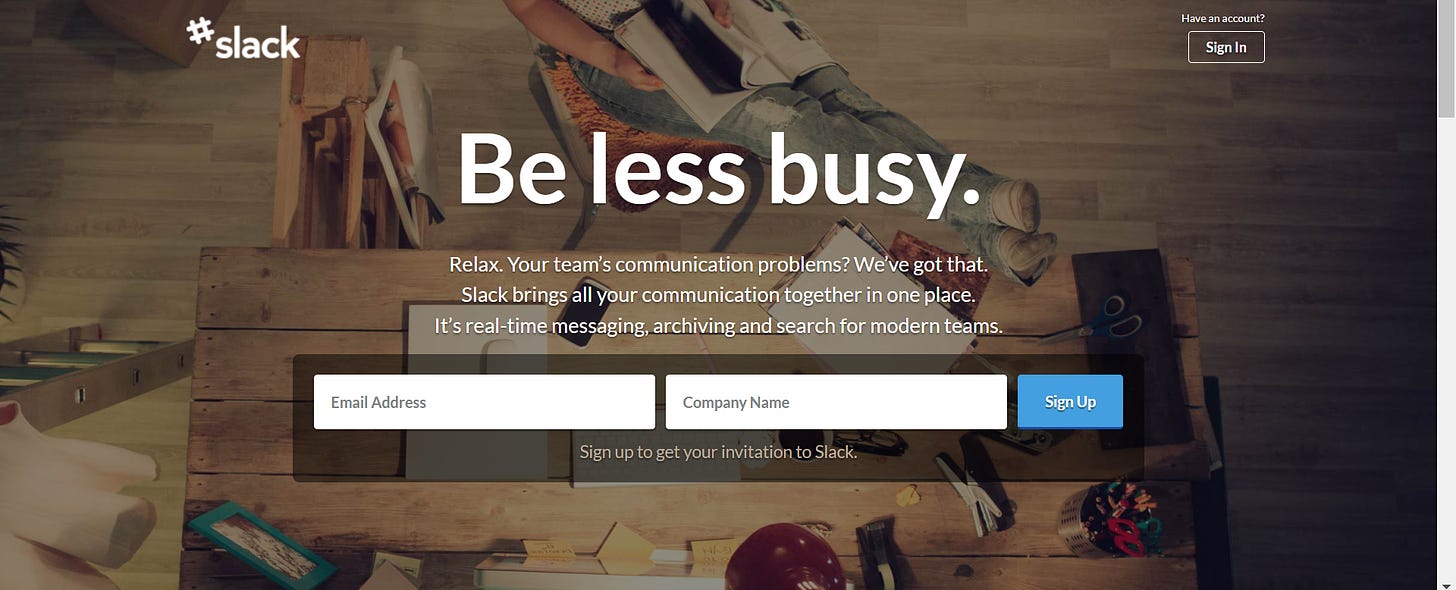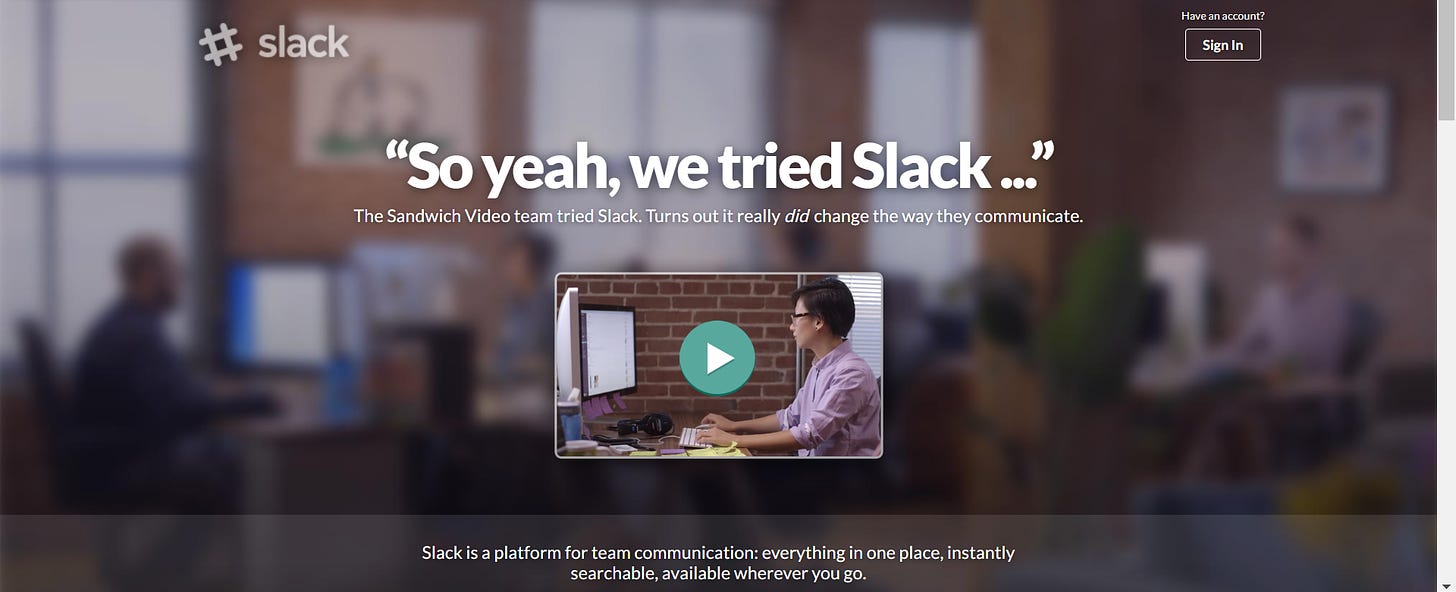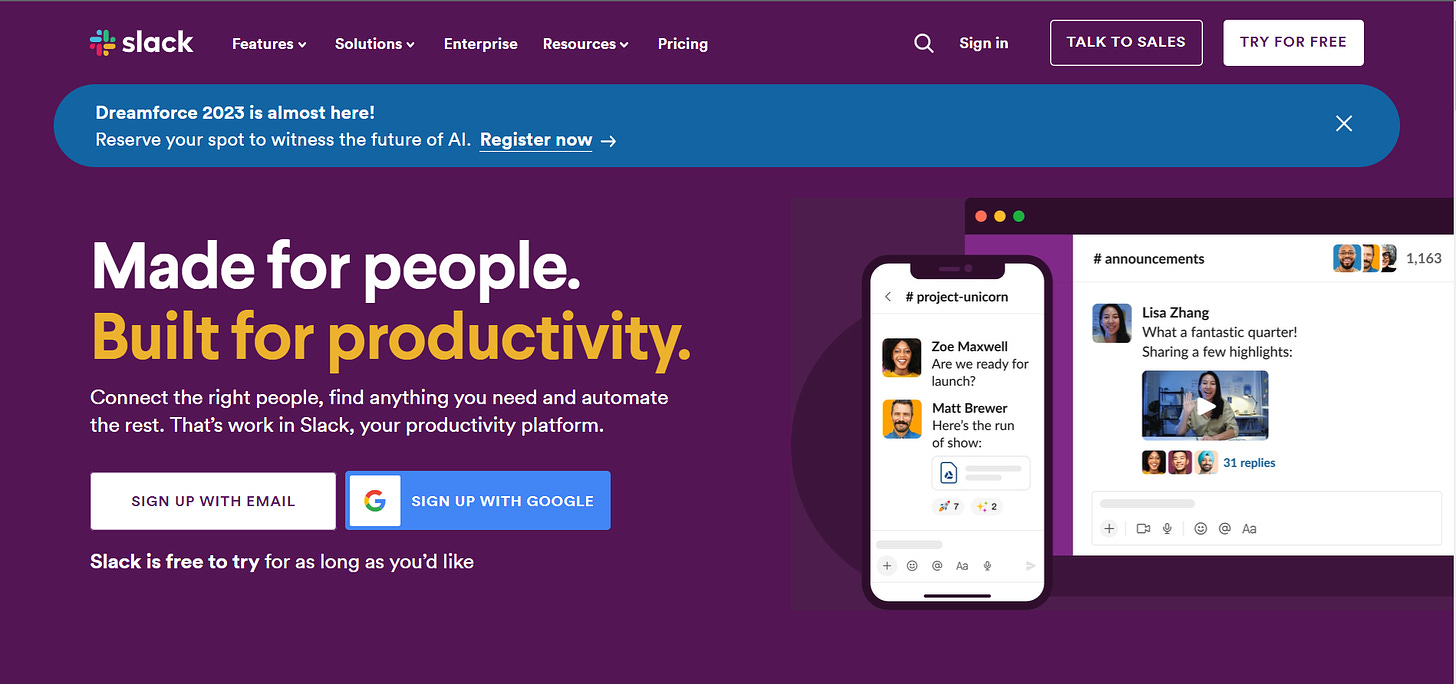MFG #13: Barbie's Marketing Success, Ideal Buyer Personas & Early-Stage Marketing.
The real hero behind the Barbie movie's success, how to prioritise buyer personas, and where you should get marketing inspiration
Hi there.
Welcome to the 40 new subscribers who joined Marketing For Geeks since the last issue. Big thanks to everyone who shares MFG with their network. Every other week (ish), I share 1 interesting thing, 3 actionable marketing insights that have helped me become a better product marketer, and 5 pieces of marketing that caught my eye.
ICYMI: In my last issue, I wrote about Africhange’s onboarding problem, identifying your users’ trigger moments, and how to do better user and competitor research.
This week, I write about the Barbie movie’s marketing success, how to identify your most ideal user, and why you shouldn’t compare your early-stage startup with more established companies.
P.S. I’m trying to get to know MFG’s readers more. Could you answer a few questions in this short form if you haven’t yet?
Also, if you’d like to join MFG’s WhatsApp community — please reply to this email with your phone number.
It’s a long one. Let's dive in!
🔑1 Interesting Thing
Last month, I watched the Barbie Movie (P.S. That was also when I wrote this section). With the Barbie movie trending and with so many comments about its marketing, I got thinking. Most tweets and think-pieces credited the movie’s success with its alleged $150million marketing budget.
But the more I thought about it, the more I realised that this wasn’t really about a marketing budget — it was a masterclass in the use of partnerships to aid distribution.
A $150million marketing budget?
First, let’s get into Barbie’s alleged marketing budget of $150million, an amount that is more than the $145million budget used to create the actual movie. Something about that seemed off to me. It seemed unlikely to me that network executives would be willing to spend more on marketing than on actual production. So, I decided to do some more research.
Most mentions of the $150million budget are credited to a Variety article, which contains an interview with Warner Bro’s president of global marketing, Josh Goldstine. I have now read the article at least 5 times, and at no point does Josh mention a $150million budget. In fact, when asked about the marketing budget for the move, he said:
“I won’t comment on the budget. The reason people think we spent so much is that it’s so ubiquitous. That’s a combination of paid media and how many partners came to play with us. Because it pierced the zeitgeist, it has the impression that we spend so much. In fact, we spent responsibly for an event movie.”
So, where did $150million come from?
From what I can tell, the claims of $150million came from this introductory sentence in the article (a sentence written by the writer, not provided by Josh Goldstine):
“The efforts of the extensive and expensive marketing campaign — which rival studio executives estimate to cost $150 million, not including the $145 million production budget — are already paying off.”
In other words, the writer claims that rival studio executives were the ones who estimated the cost as $150million. But the marketing director himself says that the general public thinks they spent more, when in reality, they spent “responsibly.”
My verdict?
People saw $150million in the Variety article and ran with it. It didn’t help that other publications, like Insider, ran with misleading headlines that reinforced this perception.
Even if the $150 million claim is true, it still doesn’t account for the movie’s success, considering that The Little Mermaid had an alleged $140 global marketing spend, but didn’t attract the same virality as the Barbie movie.
So, what’s the real reason for the Barbie movie’s marketing success?
A Masterclass In Partnerships
Now that we’ve established that Barbie’s alleged $150million budget is likely a farce, let’s talk about the real hero behind the movie’s marketing success - Partnerships.
Don’t get me wrong — the Barbie marketing team did a brilliant job with their own viral marketing strategies, like the Barbie Selfie Generator that allowed fans create branded posters with their own photos and a custom “This Barbie is…” tagline.
But Barbie’s paid marketing efforts only did half the work. In truth, some of Barbie’s most popular/visible marketing strategies (like the real-life Barbie Dreamhouse) are directly linked to partnerships and collaborations. According to the team, they signed collaboration deals with over 100 brands.
Barbie had partnerships with brands like Airbnb, Xbox, Crocs, Aldo Shoes, Progressive, Pinkberry, Miniso, Forever 21, and a host of others — too many to list here. There’s a Twitter thread that lists some of Barbie’s viral efforts that came through partnerships.
The brilliant thing is that these partnerships did more than create buzz for the movie; they also brought real revenue for Mattel (the company that owns Barbie). According to the Wall Street Journal, some brands had to pay Mattel a flat licensing fee, while others had to give Mattel a 5% to 15% cut of sales.
Earned Media Vs. Paid Media
It also helped that the Barbie movie was so naturally marketable and had tie-ins with so many brands. According to Josh Goldstine, the campaign ended up taking a life of its own, and so many brands made their own decisions to hop on the bandwagon. My favourite quote from his interview with Variety is:
“Some of those were licensing deals with Mattel and some are brands that made their own decisions to be part of the color schema of the movie. Fashion, frankly, jumped onto the bandwagon. Brands wanted to become part of this because they saw the film was finding its way into culture in such a dynamic way. It stopped becoming a marketing campaign and took on the quality of a movement.”
Essentially, apart from the paid campaigns that the marketing team planned out, a large portion of their success came from earned media — brands who hopped on the bandwagon, media publications who wrote thinkpieces, pop culture lore that built itself, and fan love for the actors, the movie, and the Barbie brand.
My Key Takeaway?
In the end, one of the best ways to hack strong marketing and distribution is through strategic partnerships. Collaboration lets you get wider awareness with less spend, and the best collaborations are a win-win for everyone involved.
TL;DR (Too Long, Didn’t Read): The Barbie movie was such a success, not because of its alleged marketing budget, but because of the partnerships it secured.
📣Tweet this.
💭3 Insights
#1. Not all customers will be your ideal customers.
For the next few weeks, I’ll be acting as a coach for one of the teams in Treford’s latest Product Marketing BootCamp. One of the first tasks the team has is to conduct market research for a product that hasn’t been launched yet. While working with the team, I realised that there isn’t enough public literature about persona prioritisation.
When it comes to market research and buyer personas, prioritising personas is just as important as defining them, especially when you’re early- or growth-stage and don’t have resources to cater to a broad audience. Your most ideal users are the power users who are likely to spend more and refer more paying users to you. However, there will be other people who use your product that aren’t your ideal users.
So, who exactly are your ideal users?
Think about the problem your product is trying to solve. Many people will have this problem, but they are not all your ideal users. Your ideal users are those who:
Need to solve the problem quickly (Urgency)
Are very willing to solve the problem (Agency)
Are unable to solve the problem by themselves (Ability)
This is essentially the Urgency-Agency-Ability framework (created by Demand Curve, I think). Your ideal users are those who have high urgency, high agency, but low ability. Your ideal user must meet all 3 of these criteria.
Let’s use a product like Substack for example. Substack is used by different kinds of people — media publications, freelance writers, companies, communities, etc. But not every one of these people is their ideal user. According to Substack’s website:
“Substack lets independent writers and podcasters publish directly to their audience and get paid through subscriptions.”
Substack’s ideal users are likely people who (for example):
Want to start monetising content quickly and have tried other tools without much success (high urgency)
Already create high-quality content regularly and are looking to monetize (high agency)
Don’t have funds or technical knowledge to build their own blogs or use complex paid newsletter/CMS tools (low ability)
Remember that Substack only makes money from creators who make paid newsletters, not creators who share content for free (like me). So, Substack’s less-ideal users are:
Companies who want to share newsletters to their customers for free
People who write as an hobby and do not intend to monetize
Creators who prefer to make money by allowing brand promotions rather than gating their content
This is not to say that these less-ideal users will not use Substack (I use Substack and I’m a less-ideal user). It means that they are not the type of users that Substack will be able to retain and make money from easily. For Substack to make money from less-ideal users, they will need to spend time, effort, and resources convincing them. For example, they'd need to convince me that gating my content is a better option than brand promotions. Or they'd need to convince a hobbyist that their writing is good enough (or has enough audience love) to be monetised.
So, if you find yourself having to spend a lot of time convincing your customers to use or pay for your product, there’s a chance there isn’t a fit between your product and its most ideal users. Once you identify your ideal users, you can build features that really matter to them and make money from them with a lot less effort.
TL;DR: While different types of people may use your product, your ideal users are those who need a solution quickly, are willing to pay for a solution, and are not able to solve the problem on their own.
📣Tweet this.
#2. Agent networks help you hack distribution.
Since I attended Babajide Duroshola’s masterclass on Distribution & Acquisition Channels at GrowthCon, I’ve been obsessed with learning more about how to utilize distribution for Motherboard (where I currently work as Product Growth Manager).
In Babajide’s class, he used MTN, Opay, Moniepoint, M-Kopa, and Safeboda as case studies. One acquisition channel they all used to achieve wide distribution?
Agent Networks.
Thankfully, the brilliant Temilade Praise has written a very comprehensive article about how to utilise agent networks as a catalyst for growth.
So, instead of waxing on about the power of agent networks, I’ll let Temilade’s article do the speaking.
TL;DR: Agent networks are an excellent acquisition channel to help you achieve wide distribution of your product.
📣Tweet this.
#3. Early-stage marketing is vastly different from growth-stage and late-stage.
One mistake many marketers (myself included) make is comparing marketing assets and campaigns from established companies with those from early-stage companies that are just gaining a footing.
Here’s the thing. Marketing for early-stage companies is different from that of growth-stage companies. And both are different from late-stage companies. For products that have already attained wide brand recognition and trust (like Apple, Google, Slack, etc.), the goal for marketing is quite different from that of freshly minted startups.
It’s why established brands with expansive budgets like Barbie can get away with paying for billboards that only show the brand colour and nothing else. It’s why Apple can launch new iPhones that get sold out without spending thousands on paid ads.
However, the type of marketing that these brands did when they were in their early stages is vastly different from the type of marketing they do now. In Apple’s early days, they ran direct attack commercials against their competitor — the infamous Mac vs. PC ads. Today, Apple doesn’t spend energy comparing itself to its competitors.
[P.S. I wrote about competitor research and Apple’s Mac vs PC ads in MFG #09]
I’ll skip the long story and get to the key takeaway:
If you’re early-stage, don’t focus on the marketing that took companies from 100k users to 1 million users. Instead, look at the tactics that got them from 0 to 10k. If you’re growth-stage, find out what got them from 10k to 100k. You’ll likely find more useful insights that apply to your specific company stage.
TL;DR: While it’s not a bad thing to compare your startup to more successful companies, you might get more insights if you focus on the strategies those companies used to become successful — rather than the strategies they use to stay successful and expand their already-wide customer base.
📣Tweet this.
⚡5 Pieces of Marketing
In the spirit of Insight #3, from time to time, I’ll use this section to showcase how the websites (or marketing campaigns) of certain companies have changed over the years. You’ll see how their copy has improved over the years (and perhaps get reassurance that your “basic” website can still get you to 1k users).
For this issue, I’ll focus on Slack’s Above-The-Fold copy.
#1. 2013 Website
#2. 2014 Website
#3. 2015 Website
#4. 2016 Website
#5. 2018 Website
[BONUS] #6. 2023 Website
Notice how this version doesn’t exactly say what Slack does the way other versions do. This is because Slack has gained enough popularity that there’s no need to state what exactly it is or what it does.
What I’m Reading
Starting a Startup — Julian Shapiro’s startup handbook
Unleashing Potential: Agent Networks as Catalysts for Growth in African Enterprises — Temilade Praise’s exhaustive article on agent networks
Did you enjoy this issue? Give it a ❤️ and let me know in the comments section.
Even better, share this with someone.














Soooo good! Thank you for sharing.
This was such a good read. I learnt a lot. Thank you.